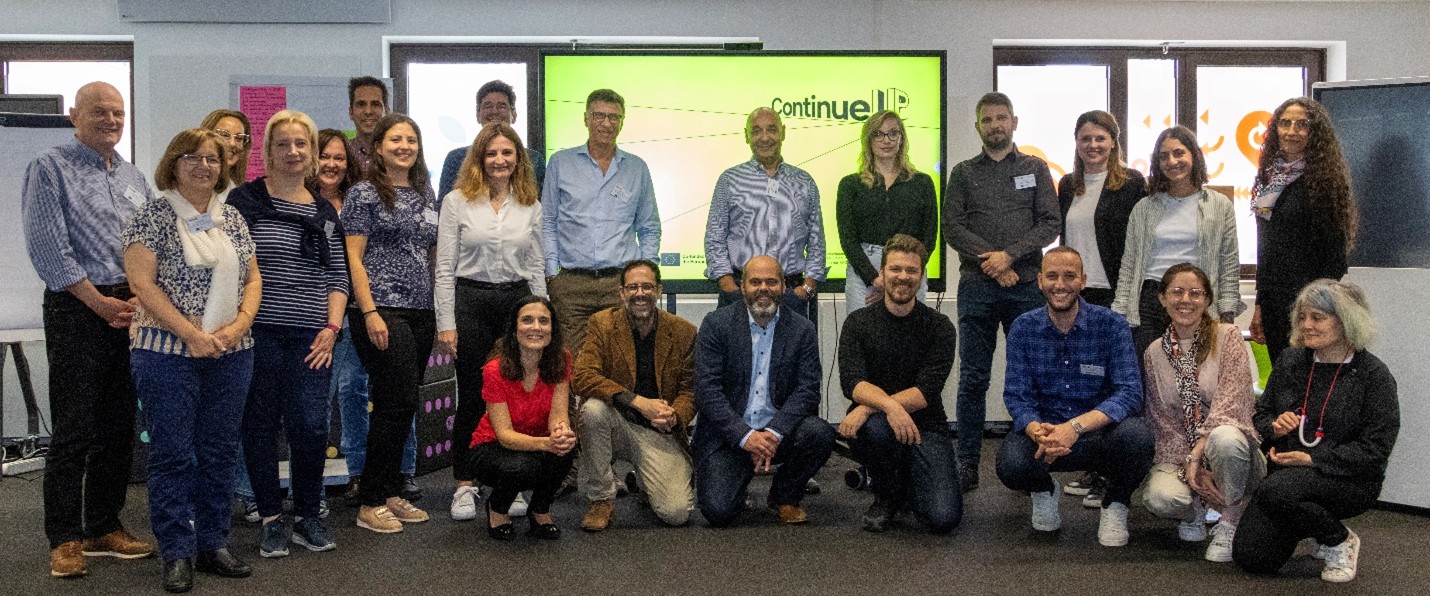This website use cookies to ensure you get the best experience on our website
ContinueUP Development Diary #4 – Involving teachers in the co-construction process
ContinueUP Development Diary is a series of articles updating initial teacher educators (ITE), continuous professional development (CPD) trainers, as well as teachers about the progress made in the development of the ContinueUP project; In this series we explain the challenges encountered and how we address them, evaluating the complex process of co-creation that involves ITE and CPD providers from three countries.

ITE Module and CPD MOOC evaluated in focus groups
In this fourth instalment of the ContinueUP Development Diary, we reflect on the feedback we received from student teachers and in-service teachers on the draft ITE Module and CPD MOOC plans. Nine in-service teachers and six student teachers from Croatia, Spain and Portugal took up the challenging task of evaluating the draft course plan from the perspective of participants experiencing the module and the MOOC – not an easy exercise considering they had to imagine what the experience of participating in the module and MOOC would be like solely based on these documents.
Bringing the end-user on board
At the beginning of the project, partners came up with their own definition of co-creation, while also looking at existing definitions in the research literature. Co-creation or “value co-creation” is a term used in the field of education, defining a method in which education staff and students collaborate to develop a curriculum or a pedagogical approach. This inspired the partners to involve the end users of the ContinueUP education and training programme. The ITE Module is mainly targeting student teachers and the CPD MOOC, in-service teachers. However, since the aim of the project is to have a strong continuity in terms of content and competence progression between the two strands, student and in-service teachers were asked to evaluate all the material and discuss together in mixed focus groups.
The project chose to collect feedback in focus groups because it can provide richer data than individual feedback. In the focus group, members could: (1) help each other when there was a misunderstanding about the content; (2) build on the ideas of others; (3) be more critical about the content thanks to the group dynamics allowing comfortable exchange of opinions. It was also important to collect feedback during the development process to make this a more formative exercise, where the Module and MOOC designers could still make changes to the content based on the feedback provided.
The focus group members examined the material unit by unit and module by module, considering the reflective questions that they were provided by the focus group moderators. Key points raised by the focus group included, for example, highlighting the under- or overestimation of timings for activities in both Module and MOOC and whenever a learning objective could benefit from further elaboration in the content. An important point raised by the focus groups was that participants should be guided throughout the courses to keep a learning diary. Focus group members also felt that the Module and MOOC could benefit from a clearer roadmap or index to give a visual overview of the course programme. The focus group also recommended that the course designers should make it clearer that this is not a course purely focused on technology and adapt the activities to accommodate both student teachers and in-service teachers.
Nuanced evaluation points
There were multiple aspects on which the focus group members had a different opinion. On the one hand, some members thought that the choice of activities could be reduced to decrease cognitive load for participants, such as in the earlier sections or the final activity of the course. On the other hand, other members thought that offering more choices provided interesting ideas for activities and could make the course more appealing to some teachers. Other points of divergence for the focus group were whether there should be graded quizzes, whether there was a balance of theory and practical ideas and whether participants need more guidance for group activities at the beginning. These points of divergence enabled a more nuanced discussion of pros and cons and helped the course designers to make more informed decisions about the content and structure.
Learning from the feedback received by peers
Since the content of the ITE Module and CPD MOOC are connected to each other, the ITE providers were able to take lessons from the feedback given on the CPD MOOC for their own work and vice versa. There were also common points raised by the focus group for both strands, for example emphasising the necessity to address the topic of artificial intelligence as part of the programme. Although the programme did not originally aim to tackle AI, the focus groups concluded that participants should have opportunities to reflect on how AI can help them in their professional development and collaboration with other stakeholders.
These were some points raised in the focus groups among many others. After working so long on the ContinueUP programme, the ITE and CPD providers appreciated the opportunity to take a step back and consider the feedback they received from an external team of reviewers. At a partners meeting in Brussels they first discussed in mixed groups of ITE and CPD providers the feedback provided by the focus group on individual units and modules and how to address it. Subsequently, ITE providers and CPD providers separately discussed and reviewed again the full Module and MOOC, agreeing on the points to prioritise in the next revision of the content and planning their next steps for finalising the programme.
Back >